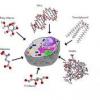Humanized mice in biomedical research
Hi, everyone!My name is Du Xuexiang, I am from Institute of
Biophysics. Today I will tell you something about the humanized mice in
biomedical research. First I will tell you why are they so important in
biomedical research? Second how can we establish the humanized mice
models?
In recent years, hepatitis, cancer and other diseases have
been serious threats to human life and health, in order to master the pathogenic
mechanisms,we must study them in animal models.
Because of the ethical concerns in humans, we have to study
human diseases in animal models instead of human models.
But many human infectious diseases do not infect mice or other
animals, which precludes the study of such diseases in animal models, such as
AIDS, HBV and so on.
Third, most of the drugs which are very effective in mice are
not effective in clinic study.
That is because there are still a lot of differences between
the research in mice and humans because of their different immunity
systems.
In the end the humanized mice provide pre-clinic models to
Infectious disease, autoimmunity, cancer biology, and regenerative
medicine.
In conclusion, the humanized mice are very important in
biomedical research.
Then I will tell you how can we establish the humanized mice
models.
First, I will tell you something about the immunity system in
brief. As we know, defense against microbes is mediated by the early reactions
of innate immunity and the late responses of adaptive immunity. Innate immunity
consists of phagocytes, NK cells and so on. While adaptive immunity cells are B
lymphocytes, T lymphocytes and so on.
The developments of immunodeficient mice provide a possibility
to the establishment of humanized mice.
From the discovery of nude mice in 1966, the immunodeficient
mice have developed quickly, such as CB17- scid mice, NOD- scid mice and NOG
mice. Especially the NOG mice which are defective in T 、 B cells and innate
immunity, that is to say NOG mice have lost most of their immunity
systems.
Then we should engraft immunodeficient mice with human
hematopoietic stem cells (HSC) or human peripheral blood mononuclear cells
(PBMC).
Third, exogenous administrations of Human Hormones, Growth
Factors, and Cytokines are all needed.
Of course, the humanized mice should be kept in SPF(Specific
pathogen-free) level animal room.
That is all, thank you very much!
Any questions?

